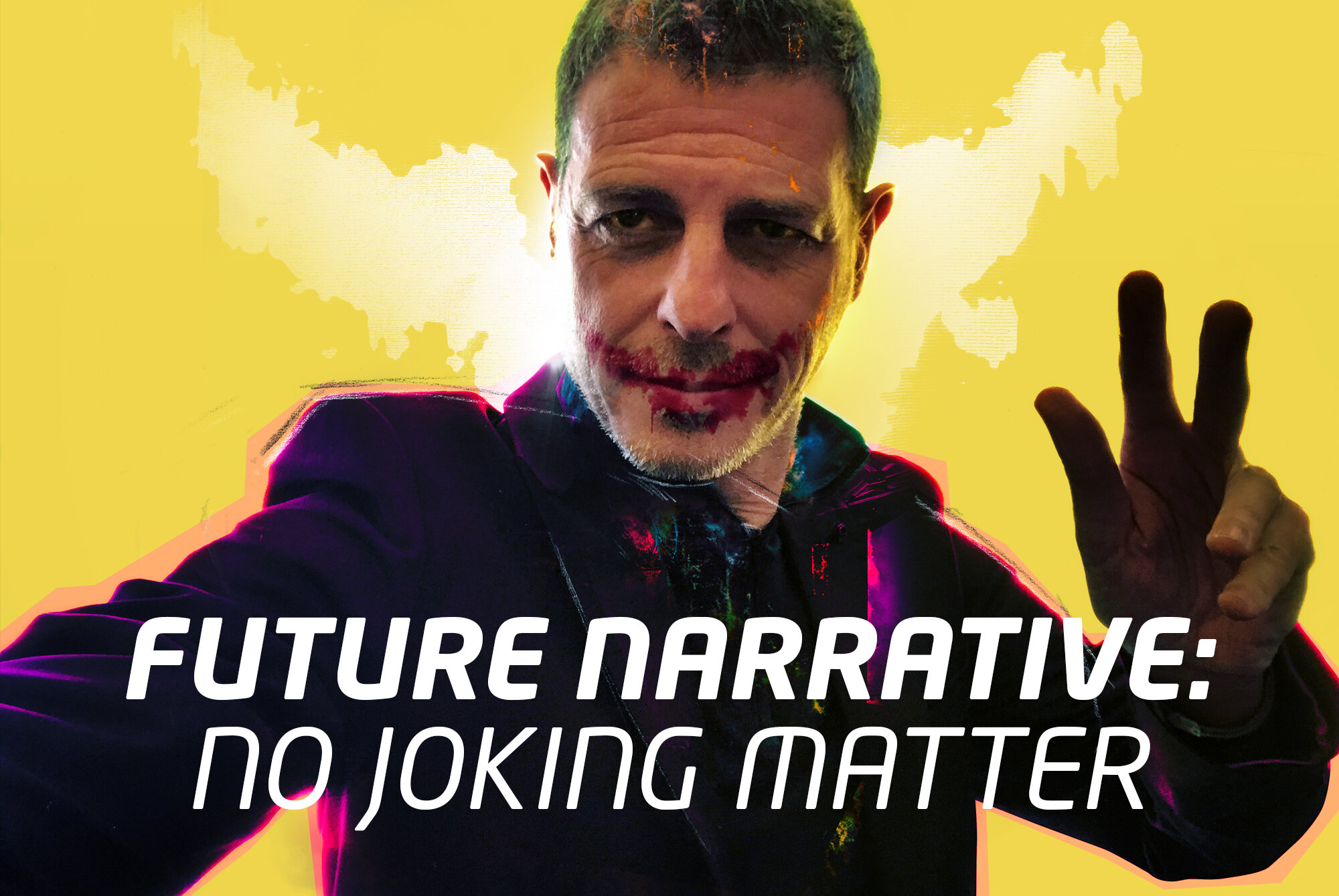The book is dead, long live the book! The film is dead, long live the film! Attention span is dead, long live social! I could go on, but no genre would be dead and no new platform is without its merits.
I watched the movie ‘Joker’ at the cinema last month. Yes, the cinema. Another one of those outdated platforms that apparently no one considers any more. The two dimensional film, shown in a darkened room with zero distraction or interaction was a masterpiece of storytelling. I respected the creative content – written and directed by Todd Phillips, memorably performed by the film’s sole lead – Joaquin Phoenix, and there was no denying the impact of the powerful cinematography and the dark oppressive soundtrack. But I didn’t really enjoy it.
And that’s my choice, it’s everyone’s choice. I love the beauty of narrative, the long winding journey it can take each and every one of us on. No matter how a film, TV series, book or play is presented, they are open to personal interpretation and what you as an individual take away from them – like art, because that’s what they are. A living, breathing art form.
Some have said Joker is not a superhero movie. I beg to differ, because it features Batman’s nemesis – The Joker – and Batman himself, albeit in the pre-superhero guise of a young Bruce Wayne. Many have insisted the film is about mental health. Yes, it tackles this issue by default because the central character is deeply psychologically disturbed – but he’s hardly the poster boy for mental health awareness. Unless everyone currently jumping on this particular bandwagon is suggesting individuals with ‘issues’ end up like Arthur Fleck – a delusional gun-toting, knife-wielding homicidal maniac?
If cinema isn’t broken, how do we approach future narrative? In 2018 the global box office was worth over $40 Billion and has increased year-on-year for over a decade. It shows no signs of stalling, with ‘Avengers: Endgame’ taking $2.8 billion in cinemas – a new all-time high. Is ‘Star Wars: The Rise of Skywalker’ set to round off the decade with the highest earnings ever?
This leaves future platforms with a tough fight on their hands when trying to convince marketing teams to invest their money in untried and untested technology. When you include home entertainment revenue, the global film industry is worth an additional $100 billion, so audiences are spending a lot of money viewing content on other devices too.
This figure naturally features TV sets, smartphones and tablets. For future audiences this will undoubtedly include VR headsets, AR glasses and autonomous vehicles.
The thinking behind the latter is illustrated by Renault’s 2017 acquisition of a 40% stake in the Pedriel Group, the publishing house that produces the weekly business magazine ‘Challenges’. They clearly recognise the future potential for published content within self-driven mobility. If we’re not absorbing written or audio material, the car interior will offer a multitude of digital surfaces to begin, continue or conclude the narrative of film and TV viewing. Are you all ready to Netflix and chill as your car makes all the decisions for you?
However, future platforms aren’t simply there to provide the same type of material but on a different device. They will inevitably offer this, but where they excel is in adding value. In its simplest terms, a smartphone can provide second screen conversation – leveraged by shows such as BBC’s ‘The Apprentice’ or ITV’s ‘Love Island’ and ‘I’m A Celebrity’ across social channels to drive conversation and generate further awareness and reach.
Others championing new storytelling are Nesta with their ‘Alternarratives’ challenge and Ford’s Developer Programme, looking to innovate the future of the car with ‘Music That Moves You’ in partnership with Capitol Records – leading to some amazing potential for storytelling around music artists and genres.
Many Futurologists or Tech Pundits will talk the talk without ever having walked the walk. I have been fortunate to push boundaries my whole career and with some amazing clients including Warner Music Group, Disney, Apple, BBC, Scientific American, Smithsonian Enterprises, Renault, Pottermore, Guinness World Records and Mark Staufer’s ‘The Numinous Place’. Together we have explored some of the possibilities for future narrative. There are many more to come.
All new forms of digital and physical storytelling should be explored as we don’t yet know where they will lead us. The impact of horror in a VR headset. The ability to bring elements of a story to life seemingly in the world around us through AR. To use Artificial Intelligence to extend and personalise narrative. All have enormous potential for a diverse cross-section of audiences, but they don’t offer replacements, they provide depth, understanding and new creative challenges.
I’ve said many times before, if the opinion that all narrative evolves into something else held water, this would have left books, radio and theatre dead long ago. They’re far from that. In a world of digital depth and diversity – they’re actually flourishing because they bring the focus back to great storytelling.
Without that story and an engaging narrative we would live in a world of meaningless words swirling past us in a fleeting moment, we have Facebook for that.
Despite what you may have been told, the future of narrative isn’t about the technology that surrounds us, it is about the thing right at the centre of everything – the human. If you never lose that focus, you’ll never lose your audience.
